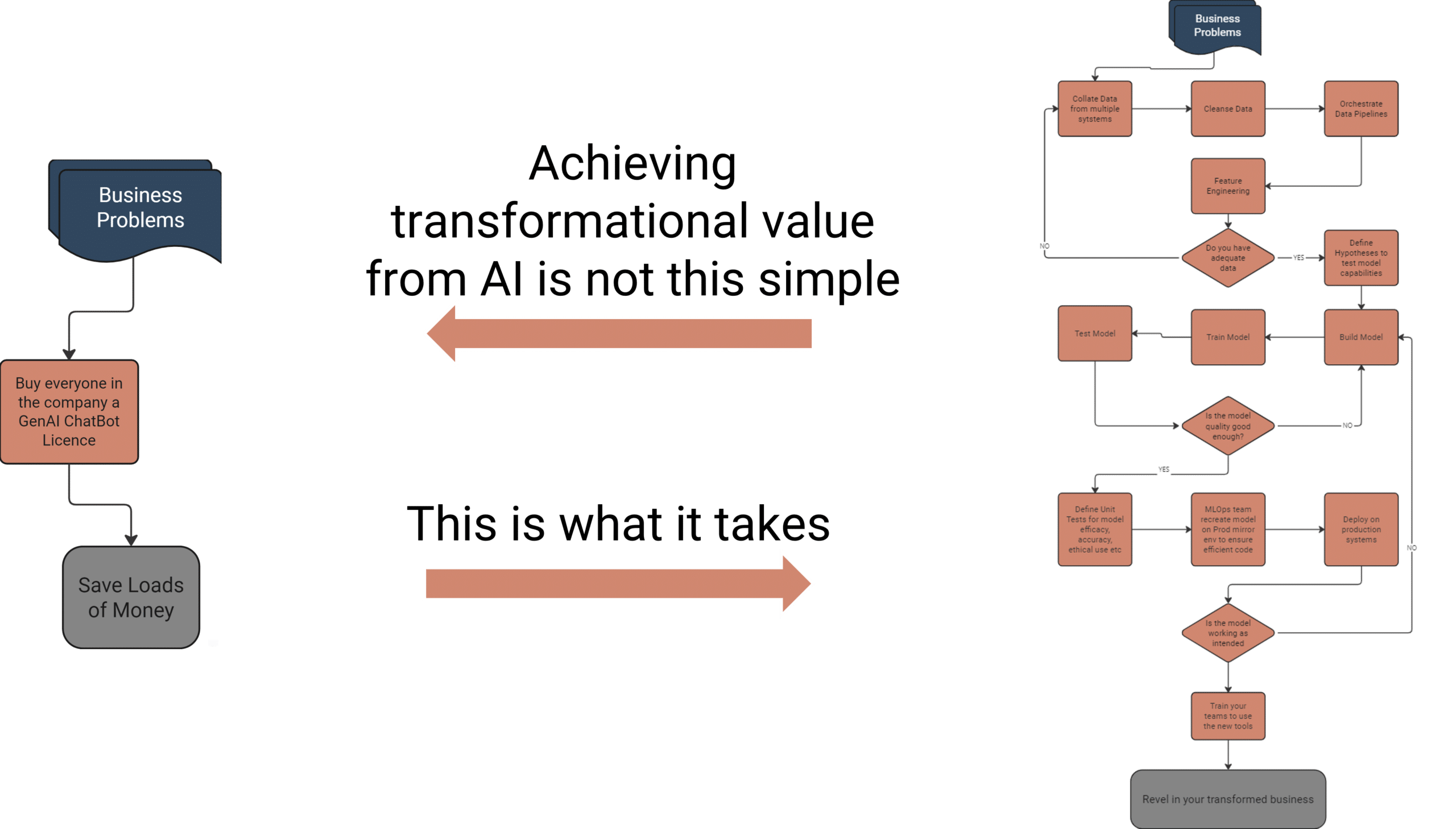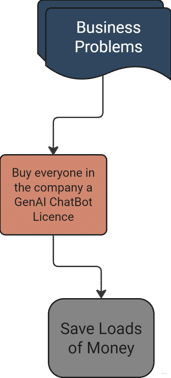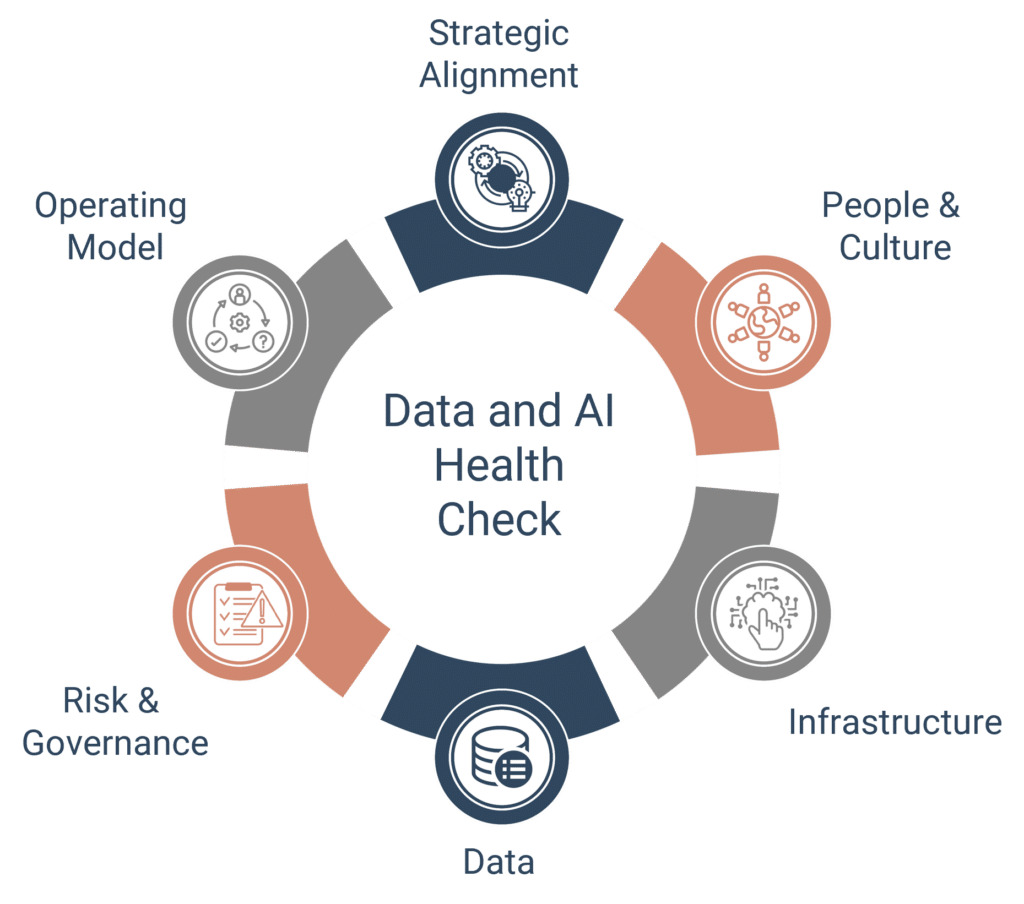GenAI the Hype vs Reality
When ChatGPT was first launched there was the inevitable excitement, I remember our CEO giving her weekly briefing in limerick form written by ChatGPT, people using it to write strategies, project plans, emails and could even debug code for you. It helped get over the “blank page” problem which is why it saw the fastest growth of any app.

That is when many businesses saw the potential to automate jobs, to increase efficiency and productivity and so they bought GenAI licences (in all their flavours) for their staff. Without thinking about how to measure the benefits.
What followed was a rapid rush of people using it to support with their day to day tasks (I use ChatGPT, Perplexity, MidJourney, NotionAI, and now Google’s NotebookLM on a regular basis). But that time saving, while big in some cases, wasn’t big enough to hit the PnL balance sheets. There will be inevitable cost savings, and people will be more productive so can turn there minds to bigger, more challenging problems. But the problem is that the “business problem” wasn’t defined up front. And no the problem isn’t “I’m spending too much money, turn on a GenAI chatbot and save me some people costs”.
The real power of AI is it’s ability to truly transform businesses and be revolutionary in the way it can support new product development, understanding customers and personalising services for them, optimising entire business processes and delivering next best action notifications that support organisations to be truly data driven. But that AI does not come as simply as turning on a switch, or accepting some terms and conditions.

To truly realise the power of AI needs an organisation to understand AI, it is driven by the data they hold. That immense store of extremely valuable information that is unique to you and how you do business. But often that data is held in multiple data stores, it is incomplete, messy, with low data quality and requires some level of engineering to supply that data to AI models. Those models need to be built, finetuned, optimised to meet the specifics of their application in the way they can answer business questions. The models need to be governed to ensure they meet legal, regulatory and ethical standards and adhere to the ESG standards you publicise.

Once models meet the conditions to answer your business needs, they need to be deployed, to production scale systems and integrated into the front end systems your colleagues and customers use on a day to day basis to truly capitalise on this new capability. That needs a level of operations to ensure the models continue to work, within the parameters you set. And that the cost of running those models don’t start to exceed the costs that would destroy your ROI.
Finally once you have the data, model development, production and governance, you need to make sure you’re colleagues are trained up to use these new capabilities effectively (and safely). And then as the rewards from the opportunities come in, you as the leadership need to make sure you understand how to record the value and ensure the projected ROI of AI is met.
AI has the power to be truly transformative across every industry. But the massive potential of AI will not be achieved by simply flicking a switch. We’re not at the stage of true Artificial General Intelligence (yet). And many companies that first launched GenAI ChatBots across their organisations are now starting to ask us to support them in unlocking the transformative power of AI through Data Engineering, ML and AIOps to deploy production AI at scale.
If you know you have this bridge to cross but don’t know where to start. Get in touch, we can support you to understand where the gaps are in your capability and get you set up for longer term success with our Data and AI Health-Check
